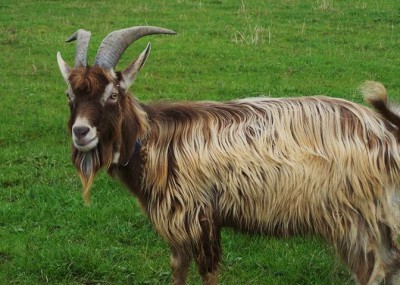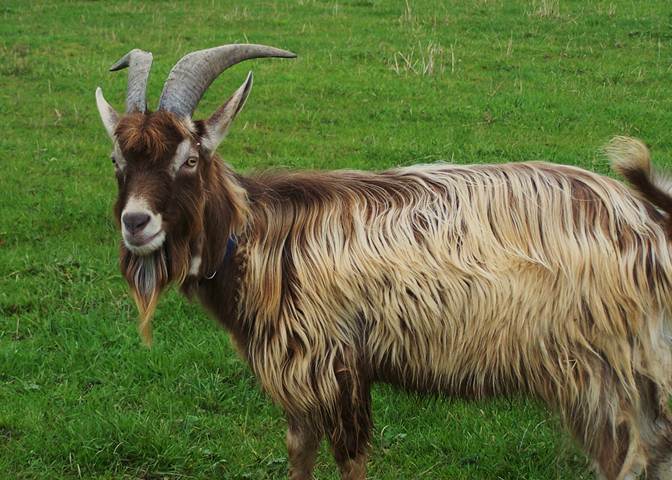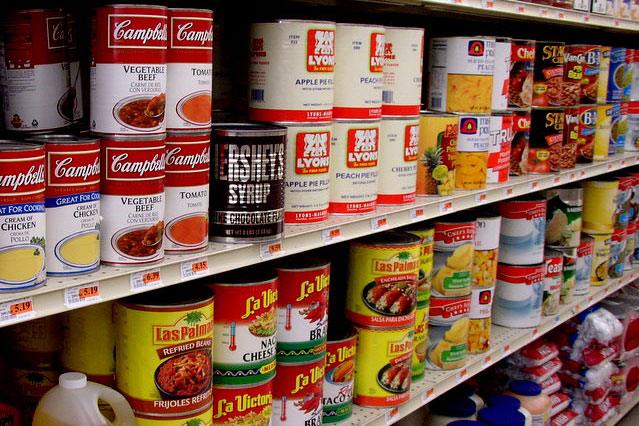
If you love milk and dairy, keeping goats on your homestead can provide you and your family the self-sufficiency you desire.
Although dairy goats provide less milk than cows, they’re a lot cheaper and require much less space, feed and grazing area than their bovine counterparts. Goats are the better choice for a small or urban homestead. They’re easy to handle, even for a woman or a child. And because of their friendly demeanor and sweet, intelligent personalities, they can bring a lot of fun, mirth and affection into the family farm.
There are more than 200 different species of goats, each with varying sizes, colors, temperaments and benefit to humans. A dairy goat is one that produces far more milk than necessary in nursing her young.
Seven of the most common dairy breeds in the United States are the Alpine, Anglo-Nubian, La Mancha, Nigerian Dwarf, Oberhasli, Saanen and Toggenburg.
The Alpine, Oberhasli, Saanen and Toggenburg are the shaggier breeds, originating from Europe. Anglo-Nubians, La Manchas and Nigerian Dwarves are dessert or tropical species which are best suited for warmer climates. When choosing dairy goats, you’ll have to consider a few things:
- Whether you want them for milk production alone or also for meat and fiber. Also, whether you want them for fun and companionship as pets.
- What you plan to do with the milk: drinking it, or making cheese, butter, ice cream and yogurt, or soap and lotions.
- Your local climate.
- How much space, time, money and effort you’re willing to invest in caring for them.
This Book Clearly Illustrates What An Easy And Rewarding Experience Raising Goats Can Be.
Remember that each doe will produce her own amount and quality of milk. Some can put out more than a gallon a day, while others will yield only half as much — or even less. It depends on several factors, not solely on breed: her health, how long she’s been lactating, her age, milking stock or line, and diet. Even the taste of her milk will vary, based on what she eats. Some lesser-known milkers produce far more than the more popular ones, while others that are not recognized for high butterfat content end up producing richer, creamier milk. There is far more variation among nanny goats of the same breed than there is between one breed and another.
But most does will produce substantial amounts of milk, often more than a gallon per day. A healthy nanny lactates 9 to 10 months a year, with milk production peaking at 8 weeks after she kids and continuing for about 3 months. Lactation then begins to decline until it’s down to about just a quart a day. Two months before the next kidding, the milk dries up.
1. Alpine
Alpines, or French Alpines, are medium-sized hardy goats that originated in the French Alps. They have dish faces, erect ears and range from white to gray or brown and black colors. If you have a large family, these girls can meet your need as they’re known to be steady, reliable milkers. According to CountrysideMag.com, the Alpine averages the highest annual milk output of any breed, producing about 2,000 pounds per year. It has, however, the lowest levels of fat among all kinds of milk – including cow’s and human’s. Protein in Alpine milk is high, and compared to the popular Saanen goat milk, it is higher in all nutritional aspects except for fat – which makes it a much healthier choice.
Alpines are friendly, adaptable and useful around the farm. In Europe, neutered males (wethers) are often used as pack animals.
2. Anglo-Nubians
Nubians are a large, graceful breed that were developed in Britain with mixes from the Middle East and North Africa. They have long floppy ears (which make them adorable as kids — they almost look like puppies) and high Roman noses. They come in many colors, often black or bay. Because of their heritage, they can tolerate very hot climates and have a longer breeding period than others.
Story continues below video
Nubian milk is rich and creamy, with a high butterfat content averaging 4-5 percent — which makes it sought after by cheese and ice cream makers. Because of their size, Nubians also make wonderful meat goats.
They can be notoriously vociferous, though. They cry a lot when separated from their young or from the rest of the herd, and their constant bleating when in heat can reach annoying – almost scandalous – levels. (This can get embarrassing to neighbors, so unless you have the acreage or neighbors who don’t mind the noise, it’s definitely a factor to consider.)
3. La Mancha
Originally from Oregon, La Manchas are the only American breed developed entirely in the United States. They are medium-sized and are very easy to identify because of their small ears that are almost invisible. They have either gopher ears – tiny and rounded – or elf ears, smaller than 2 inches. La Manchas produce milk that is sweet and high in butterfat, averaging 3.9 to 4.5 percent. They are known to have the calmest and sweetest of dispositions among the standard dairy breeds, so they can double as pets. La Manchas come in any color or combination.
4. Nigerian Dwarf
Although they’re a miniature breed, Nigerian Dwarves produce surprising amounts of milk. At less than just 2 feet tall, does are able to churn out up to half a gallon a day. Moreover, their milk is richer, creamier and sweeter due to the high butterfat – averaging at 6 to 10 percent. And because of their small stature and trainability, Nigerian Dwarves are so much easier to manage. Does and wethers especially do well with children.
Dwarves can breed all year round, so if you have 2 does and stagger their breeding schedules, you can have a steady supply of milk all year round.
5. Oberhasli
Although a modern American breed of dairy goats, Obers, like the Alpines, have origins in Switzerland. They’re the least common among the standard dairy breeds. They are medium-sized and come in a distinct bay or mid-brown (chamoisee) color with black markings on their faces, backs, belly, tails and lower limbs.
Story continues below video
They were originally classified as Alpines but eventually came to be known as a breed of their own. They have a mild temperament and are easy to work with at milking time.
6. Saanen
The most popular breed worldwide, Saanens are the largest of the standard dairy goats. They are white or off-white, with perky ears and an extremely gentle personality. Their closest cousins, the Sables, are exactly like them except for the color which is anything but solid white. Saanens produce great quantities of milk, with the ability to churn out 1-2 gallons per day. Often referred to as the Holstein of dairy goats, they are a favorite among commercial dairies. They are not particularly known for their butterfat content, though. Compared to the richer, creamier milk of the Nubians and Dwarves, Saanen milk might taste bland and watery. If you want to use your milk for soap-making, Saanens would make a good choice.
7. Toggenburg
Toggs are the oldest known dairy breed of goats. Like the Ober, this breed originated from the Swiss Alps and was bred specifically for a strong, goaty-tasting milk – which cheese-makers love. They are acclimated and perform better in cool climates. Toggs come in light fawn to dark chocolate color, often with white ears, white stripes down the face, and white “stockings.” They produce only moderate amounts of milk, with butterfat levels on the lower side. But they are esteemed for their long, extended periods of lactation. Toggs also are a quiet and gentle breed, often curious and inquisitive. They make wonderful pets as well.
Whatever breed you end up choosing, remember that goats are herd animals that need the companionship of each other, so you have to get at least two of them. And since you’re keeping them for milk, breed them annually. They’ll reward you not just with delicious, healthful milk, but also with many years of fun and friendship. Not to mention a bunch of sweet, fuzzy little kids each year.
Which breeds are your favorite? Share your tips in the section below:









